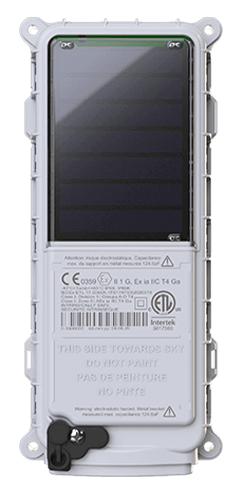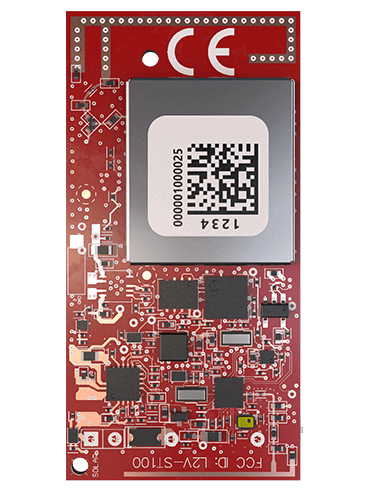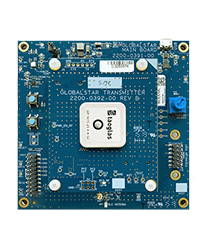Thinking Differently About Private Cellular Networks
Imagine a workday without your cell phone and the public wireless networks it runs on. No apps, no social media, no login verifications. Imagine your next business trip with no maps, no digital tickets or selfies, and no playing games while waiting in line at Starbucks. Hard to imagine, isn’t it?
The same thing has happened with private wireless networks. Since Robert Metcalf created Ethernet in the 1970s, private Wi-Fi networks have taken up residence in our businesses and homes, coffee shops, hotels and airports. Private networks have also adopted the same cellular technology that connects your phone, providing the reliability, performance and security of cellular standards. That has already made it essential in warehouses, factories, process plants, ports, mines and energy platforms – and its growth is set to explode.
That’s because they overcome the weaknesses of Wi-Fi for business-critical applications. With 600 million Wi-Fi devices in the field, interference among adjacent Wi-Fi networks has become real problem that affects performance. That same widespread deployment has given hackers years of experience at penetrating Wi-Fi networks, as we explored in blog 6.
Cellular challenges
Private LTE/5G network deployments worldwide are set to accelerate from 4,000 in 2022 to more than 60,000 by 2028. Unlike other wireless technologies, private cellular’s robust architecture provides coverage for extensive areas and supports massive device densities and multi-gigabit speeds. But private cellular struggles to deliver these benefits in some locations. Industrial spaces like warehouses, ports, and airports, as well as venues for high-density events, can be maze-like in their complexity, requiring higher signal resiliency, and reliability than conventional cellular can deliver.
Take, for example, an autonomous mobile robot solution for warehouse automation. Warehouse environments are often metal and cross multiple sealed temperature zones. This creates coverage problems, and calls for multi-cell deployment. In many deployments, robot’s control and safety signals, are being blocked from one cell but cleared from another avoiding disruption of service. However, this becomes a dense deployment of cells which operates independently, creating boundaries in between.
Boundaries in dense deployments mean interference at the edges, resulting in low data rates, and tricky handover. It is common to see in these settings where the device ping-pongs between few cells with incomplete handovers and that disrupts wireless connectivity. In addition, robots typically have many cameras and need to upstream the video for analytics, safety and performance reasons. All together, you end up with high interference/low-capacity system with crippling handover issues as bots move.
Cellular – but better
In our blog series, we introduced you an innovative architecture for private cellular networks. Its remote radio units (RRUs), installed throughout a facility, create a single “supercell”. All radios transmit to and receive coherently with no handovers and without interfering with each other. Signal to the UE is boosted and interference minimized. Each UE in the network reaches almost peak rates, with no congestion in a single cell.
It's called XCOM RAN: a 3GPP 5G programable Radio Access Network, running on generic servers, which synchronizes and calibrates the connections with the RRUs so that all are transmitting the same information at the same time on the same frequency. Once the system is synched, it exchanges streams of data with every UE, calibrating the parameters for each one separately.
Transforming private networks
XCOM RAN offers a competitive cost for premium performance, with an entry level system cost comparable to existing DAS and small-cell solutions. Contributing to that cost are unique features of the system.
Because critical processing takes place in software, it supports industry-standard RRUs and works with conventional UEs. Installation is also remarkably easy and low cost. As we discussed in our second blog on network planning, conventional private cellular networks require detailed and costly planning for coverage, capacity and interference to deliver good performance. Installation of XCOM RAN is far simpler since it operates as a single supercell, XCOM RAN scales with the number of RRUs deployed. If a new application requires more coverage or capacity, you simply add more radios and the server capacity will increase accordingly. All with the security you expect from cellular industry standards.
Like most private wireless networks, XCOM RAN provides a network management system to simplify configuration, monitoring and management. What sets it apart is the degree of granular control it delivers to maintain best performance as conditions change. The NMS can measure and display over 300 3GPP-defined metrics and compare with them KPIs. Statistics on aggregate cell levels give you the 50,000-foot view of capacity – and its supercell design means that data tells a big story.
Business journalists and consultants have been writing about the digital transformation of business since – well, it feels like forever, and there has been a lot to write about in recent decades. But the breakthroughs that matter seldom begin with strategy, finance or market reach. They start with thinking differently about the problem and finding a better solution than anyone else could. That’s private networks with XCOM RAN, and why customers come to find they can’t imagine operating without it.
Learn how it can provide the foundation for your own digital transformation at the Globalstar website.
This post completes our series on private wireless networks, the challenges they are designed to meet and the unique value delivered by a breakthrough technology called XCOM RAN.
 SmartOne Solar
SmartOne Solar SmartOne C
SmartOne C ST100
ST100 STX3
STX3 STX3 Dev Kit
STX3 Dev Kit SPOT X
SPOT X SPOT Gen4
SPOT Gen4 SPOT Trace
SPOT Trace

